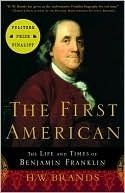But Parliament was a legislative body; it had not yet developed an executive arm. The executive power remained with the Crown. In theory this power was simply executive: “the king in Parliament,” in the era’s formulation. Yet as any student of government knows, and any practitioner of government experiences, the line between legislation and execution is often fine and always subject to transgression. An eighteenth-century British monarch could never wield the power the Tudors took for granted in the sixteenth century, but he or she could still make a mark. The size of the mark depended on the
...more
Welcome back. Just a moment while we sign you in to your Goodreads account.


